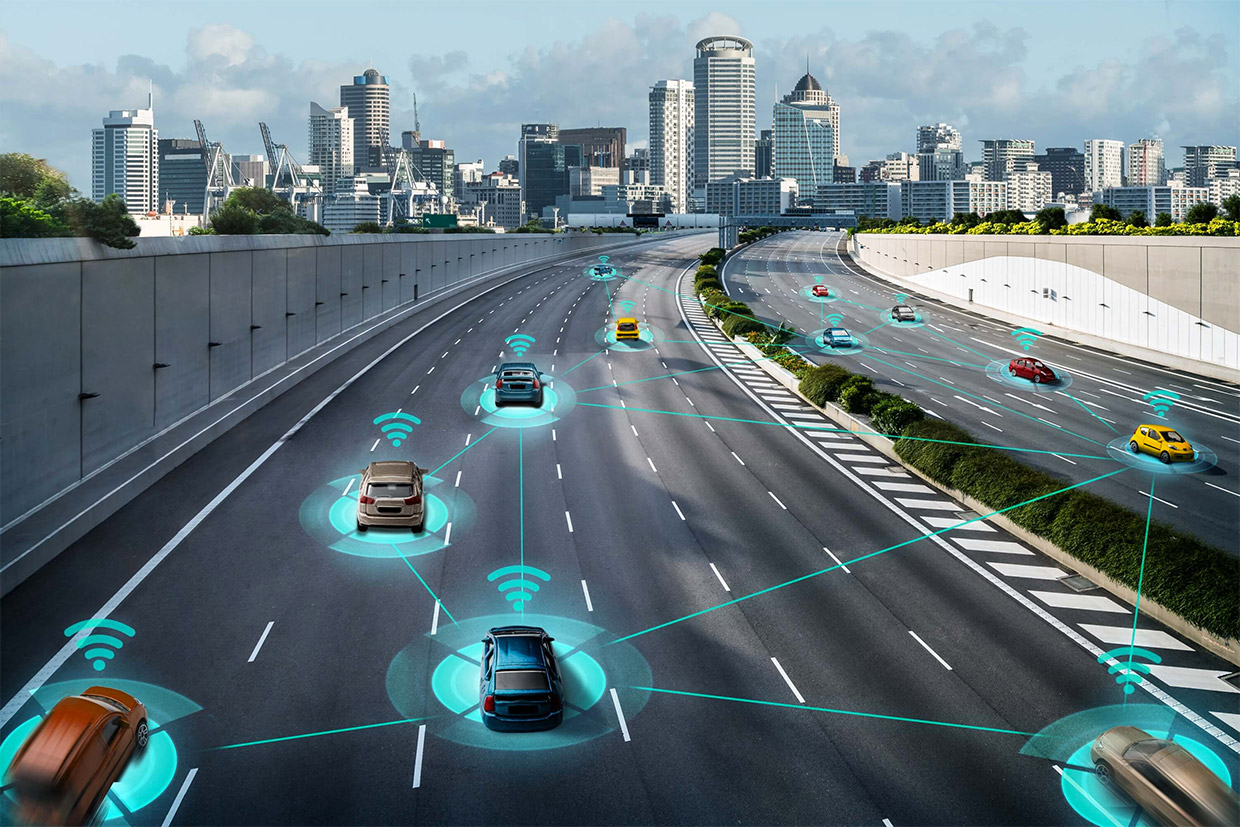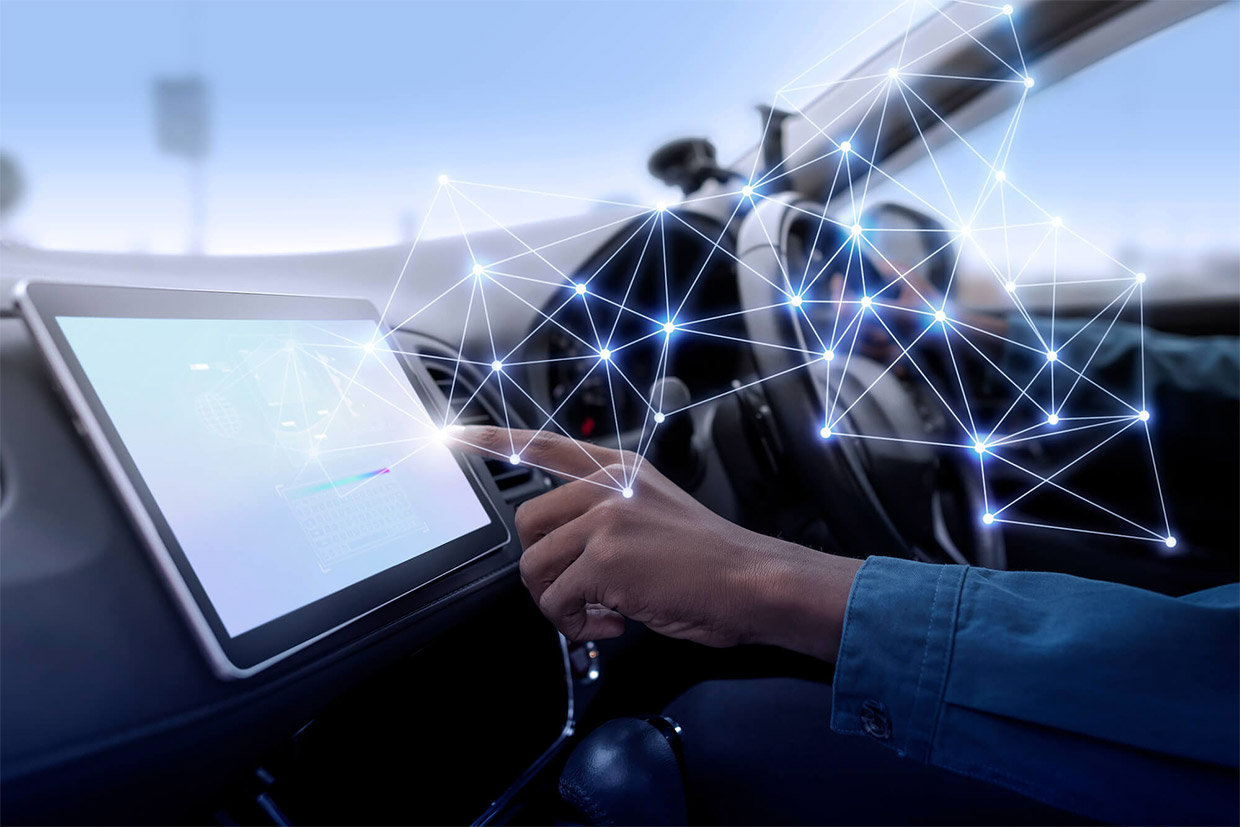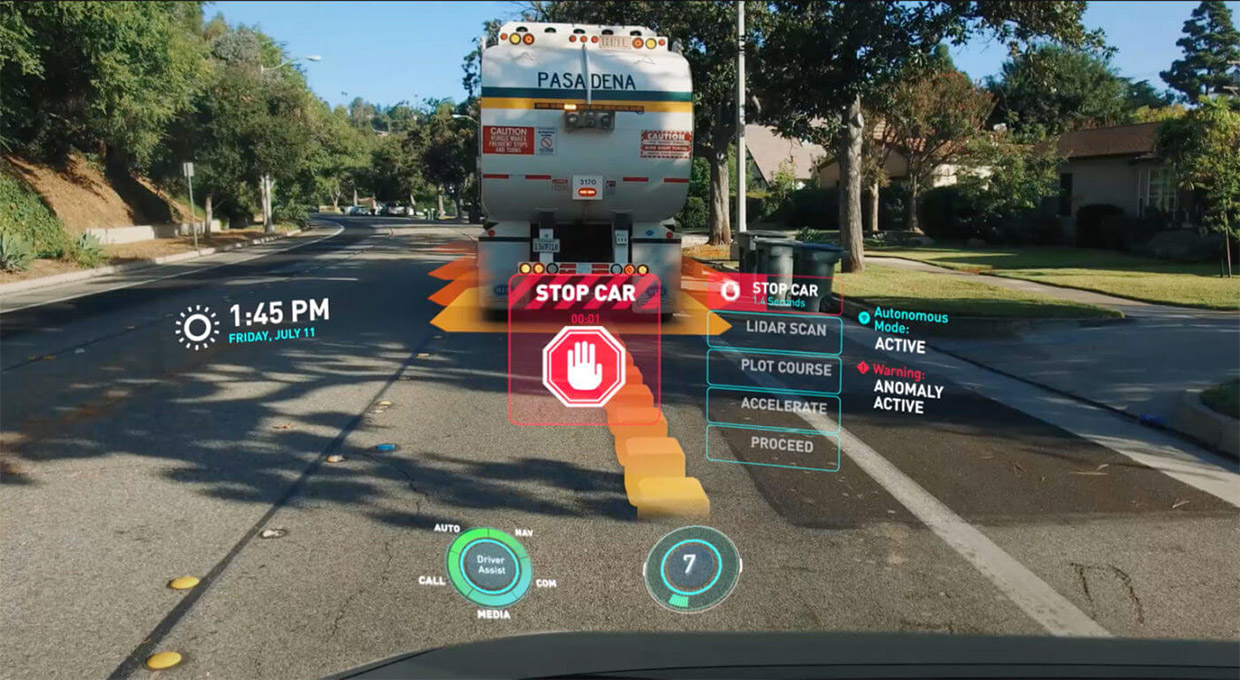
In recent years, several tech trends have combined to paint an exciting picture for the future of the automotive industry.
Electric, autonomous, and connected vehicles promise are accelerating our automotive evolution because they offer greener, safer, and more cost-effective solutions than traditional vehicles. Likewise, other vehicle innovations such as AR-HUD, biometric authentication, and AI parking aspire to make everyday transportation smarter and improve customer experience. But before these tech innovations become mainstream, there are still many hurdles to overcome.
Read on for curated insights into the most promising trends in the automotive industry, and what obstacles stand in the way of these technologies that are no longer confined to the realm of science fiction.

1. Trends in electric vehicles
With the ongoing uncertainty of gas prices and inflation, it’s no surprise that electric vehicle (EV) demand and sales keep increasing.
In the next 10 years, the number of EVs on the road is expected to increase by nearly 15-fold. This projection kindles hope for the climate-conscious because EVs have the potential to dramatically reduce carbon commissions.
EV buses and the two and three-wheeler segments in particular are seeing rapid growth. The market share for these vehicles is at a high of 44% and 42%. However, sales of vans and trucks, and passenger vehicles are still low, at a mere 1% and 9% respectively.
Although the market trend is slow for these EVs sales, enterprises are beginning to recognize that the future of automotive services is a lucrative one. Industry leaders like Porsche are investing in next generation battery producers and other technologies to maintain these vehicles. So we expect the EV tide won’t ebb anytime soon.
Despite massive progress in the past decade, we have yet to see EVs dominating the roadways. And although there is progress with countries passing better carbon emission laws and innovative EV battery technology advances, we have a long way to go. EV Battery charging capacity is also improving, and we are seeing better infrastructure. But is this enough to spark an automotive evolution that will produce long-lasting change?
It is possible, but this evolution will take longer than the green experts anticipate.
Threats to the EV future of the automotive industry
The greatest threats to the EV sector are infrastructure and – ironically enough – sustainability.
As of now, the logistics and cost of developing better EV infrastructure make it nigh impossible to expand the market to under-resourced countries. Even within North America and Europe, collaboration between enterprises and government agencies to establish such infrastructure is slow going.
Because of this, we find ourselves in a chicken and egg situation: consumers are reluctant to buy EVS without the assurance that they will be able to charge them regularly. Meanwhile, enterprises/governments are waiting to reach some invisible tipping point of EV ownership before implementing charging infrastructure becomes economically viable.
The second threat has to do with sustainability. While EVs can reduce our carbon footprint, the lithium used in EV batteries comes at a high cost. Environmental damage from lithium mining is unsustainable and recycling these batteries has proven a costly challenge. Though Tesla has reported new tech that allows them to recoup 92% of their original raw materials for future use, EV batteries must be more efficient and affordable before they can become mainstream.

2. Trends in autonomous vehicles
Beyond EVs, the future of the automotive industry is firmly focused on making autonomous vehicles an everyday reality. Some companies like Google, Hyundai, Ford, and even Domino’s, have already developed and deployed fully autonomous vehicles that operate without human assistance.
These fully autonomous vehicles are different from AI-assisted driving vehicles. And although over half the states in the U.S. currently approve the use of fully autonomous vehicles on their roads, they won’t be available to the public for at least another decade.
When these vehicles do become publicly available, the most likely use cases are robo-taxis and delivery (that’s where Domino’s comes in). There’s even talk that such delivery might come via a fully automated vehicle that can fly or travel by road (eVTOL). These flying vehicles could be commercially available as early as 2024, however, governmental concerns and regulations for navigating air space will likely push this date back.
Threats slowing the development of autonomous vehicles
There are clear dangers in developing partially or fully autonomous vehicles. One of these is the hijacking of electronic elements to endanger the life of road users. Another threat is the sheer expense of making these cars for the road or hybrids that can also fly. Other dangers include the breakdown of sensors and related safety elements.
In the interim, the Highway Traffic Safety Administration (NHTSA) is taking care of the grading levels for autonomous vehicles as part of the automotive evolution. Until the NHTSA completes all its public safety checks, we will be confined to reading about the exciting developments in this field.

3. Trends in vehicle connectivity
As our world becomes ever more connected, many leaders in the automotive industry are seeking to leverage data to increase customers’ lifetime value and improve user experience.
Vehicle connectivity has the potential to drive greater innovation and enhance customer satisfaction – not to mention, dramatically alter the way we drive through technology like:
- Telematics (Wi-Fi, cellular, back-end services, GNSS data)
- V2X Communications (V2I, V2N, V2O, V2H, V2V)
- Infotainment (Dashboard, seat entertainment, Wi-Fi, Audio)
But one of a vehicle owner’s biggest headaches is getting issues diagnosed and fixed in a timely manner. By including sensors in the electric vehicle and connecting them (both internally and externally to the cloud), issues can be resolved seamlessly via over-the-air (OTA) updates. Not only does connectivity keep consumers safe; it allows manufacturers to iterate on the products faster.
Another innovative connectivity use case applies to insurance. By tracking data regarding driving styles, your insurance company can support new driving habits that save costs and promote safety. Otherwise, data sharing can include advising drivers to avoid pitfalls on their journey, including potholes.
Clearly, this connectivity is a dream come true for marketers, who can improve your driving experience by sharing information with vehicle designers. At this rate in automotive evolution, the future of driving is bright.
Challenges to vehicle connectivity
One of vehicle connectivity’s most apparent dangers is the risk of unlawful access. As connectivity improves, hackers have more access to your car, home, phone, and all other data.
This breach potential poses unrivaled threats such as losing your identity, compromising bank accounts, and physical dangers in the house from break-ins. Until car manufacturers and data companies can up their game regarding data protection, these elements will remain a threat to the evolution of connected vehicles.

4. Tech leading the charge in automotive evolution
To think it all began with the humble steam engine back in 1769…Needless to say, automobiles have come a long way.
The invention of the automobile was so revolutionary because it gave people unprecedented freedom of mobility and access to resources previously beyond reach. It also led to the improvement of infrastructure and made the transportation of goods more efficient.
Though cars haven’t changed much outwardly in the past 50 years (at least not as much as they did in their first 50), huge strides in technology have occurred underneath the hood to make driving safer, more sustainable, and more enjoyable.
Below are some of the most exciting technologies impacting drivability and user experience:
A. AR-HUD
Formerly the stuff of video games and sci-fi, augmented reality heads-up displays (AR-HUD) are becoming a reality for everyday vehicles. An innovative company by the name of Envisics is developing holographic windscreen displays for cars in partnership with major vehicle companies.
The initial AR-HUD should encompass basic information for starters. For example, developers envisage showing the car speed, distance from other vehicles and cyclists, navigation information, and route data. Later displays may even include entertainment, though regulations will determine how and when such entertainment can be accessed to ensure road safety.
B. Biometric authentication
In today’s world of touch ID password access and facial recognition to unlock your phone, it should come as no suppose that such biometric authentication is being applied in the automotive industry.
What’s exciting, though, is that this innovative tech extends beyond simply unlocking or starting the car. Other applications include using facial recognition to program driver-specific settings or to identify all passengers and cross-reference their Spotify preferences to automatically play music the whole car can enjoy.
Then, of course, there’s the benefit of added security. When these vehicles become readily available, no one but the owners or approved drivers will be able to drive them. Biometric authentication in the form of facial recognition, fingerprint mapping, or retina scans will increase safety and maintain ownership.
C. AI parking
AI is already integrated into many vehicles, relying on sensors and cameras to guide the parking process. But AI parking technology takes this one step further.
Sensors embedded in parking spaces or near parking lots will extract real-time data from cameras to notify drivers regarding the availability of parking spaces. This service will use a feature known as the AI-driven parking management system to reduce traffic congestion, optimize parking availability, enforce parking regulations, and clarify often confusing parking policies.
When integrated with data platforms for smart cities, such technology even has the potential to inform urban planning efforts by tracking mobility trends and predicting traffic flows.
Obstacles blocking automotive evolution
One clear AR-HUD threat is safety. As with touchscreen dashboard displays, there is the potential for this feature to distract the driver from the road or to compromise their vision of their surroundings.
While biometric authentication makes it more difficult for nonauthorized users to access vehicles, the collection of biometric data has its own inherent risks. Improper usage of such data is a violation of users’ privacy. As such, cybersecurity should be at the center of all digital developments in the automotive industry.
Similarly, an AI parking management system entails tracking mobility data and, therefore, tracking the movements of real people. If this data were to fall into the wrong hands or to be applied unethically, there could be serious threats to public safety.
Find new business prospects & pioneer the future of the automotive industry
There is no question that the future of the automotive industry holds countless new business opportunities. We anticipate that new, connectivity-based automotive services will trail closely behind all the gadgets and gizmos we got to see at CES 2023 in Las Vegas – and not by far.
Stick around to watch how this automotive evolution unfolds but don’t hold your breath. Lounging in an autonomous vehicle on your commute or flying through the skies in a hybrid is still a decade or more away.
Until then, if you want to learn more about emergent tech and successful POC projects in this space, you’re at the right place.
Sign up for a free trial to browse use cases, scout vetted startups, and discover their next partnership opportunity using our innovation matchmaking platform.

